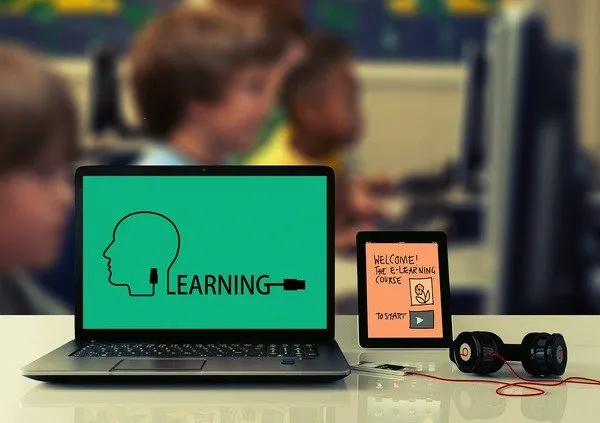While the scope and outlook for e-learning has always been excellent, it especially experienced a surge in popularity in the last 5 years. You would be surprised to know that experts analyze that the industry will surpass the $320 billion mark by next year. As a corporate entity, an individual, or an academic institution, you may already be thinking about jumping on the bandwagon and optimizing your e-learning course or corporate training manuals to reach a wider target audience. That's an excellent idea that may propel you two steps ahead of your competitor. However, first, it would do you a world of good if you understand how you will do that. Below, we will take a deep dive into understanding the core e-learning translation requirements and discuss the importance of e-learning content localization.
Understanding E-Learning, It's Wide Occurrence, and Why You Should Consider Investing in It
Let's briefly consider the meaning of the phrase e-learning. The term is short for “electronic learning”. This type of learning is used in corporate, academic, and individual education or training programs via digital means, delivering the content to a wider group of employees or students throughout the globe. E-learning can come in a variety of formats, such as one-on-one tutoring/training, business seminars, educational webinars, digital classrooms, online corporate training manuals, educational apps, and much more. By having your content accurately translated along with investing in e-learning localization, you won't just be able to reach students, clients, or employees from all over the world but also to deliver your target audience engaging, exciting, easy-to-understand, and relatable learning educational content.
E-learning is a powerful education and training tool that is used by individuals and companies to save costs related to in-person instruction and simultaneously help their learners and employees with their skills and professional development. This format also helps students learn in a more comfortable environment and at their own pace.
However, while there can be no compromise in the quality of your content translation – it is also important to understand that there is another important element to make your e-learning content that much more captivating and engaging – localization (more on this later).
The Merits of E-Learning Translation and the Problem It Solves
Let's quickly glance over the immediate advantages of e-learning translation and why it is fast becoming one of the best ways to reach and captivate a more global audience.
It Will Attract a Much Wider Target Audience
One of the most wonderful benefits of digital learning is that an individual, institution, or business entity can teach or train from anywhere in the world. E-learning doesn't require a lecture hall, classroom, or corporate training room. A professional individual or company will never be limited by any time zones – they can reach global users in varying time zones and multiple locations all at once – thanks to content translation and localization. This guarantees scalability, is more time-efficient, and can yield better and more positive results.
Cost Mitigation
Another serious advantage of creating accurate and engaging e-learning materials is that it will help you save money. First and foremost, there are no distribution expenses. You will also avoid having to tediously store educational or training materials in physical locations. With digital learning, everything is securely stored on the cloud, ready to be accessed by authorized users anywhere and anytime.
Help in Propelling Your Learning Outcomes
If you implement and abide by the core principles of e-learning translation requirements, you stand a higher chance of helping foster a community of engaging, better-trained, and educated individuals. According to reports, it has been identified that up to 60% of students were able to demonstrate better information retention when they were learning digitally. So yes, it can be worthwhile for individual trainers or educators and institutions and businesses to invest in e-learning translations.
Important Factors That You Need to Implement for Producing Accurate and Superior E-Learning Translations and Localization
Knowing Your Users or Audience
When it comes to e-learning translation requirements, this is by far one of the most important ones. While quality translations require accurate conversion of content into a given language, to make it so that your users truly resonate with learning material, you need to localize the product. Let's see how you can achieve that.
Understanding Culture and Recognizing It Entirely
Before you translate your e-learning materials, it is vital that you first learn more about the culture of the target region. This involves acquiring an intimate knowledge of the social behaviors of the users in that region, their style and pattern of education, and how they essentially communicate. A good example can be learning about different types of cultural or religious holidays observed in that region. This is going to help you design an e-learning course that provides the users the opportunity to flexibly manage their studies or training.
The Primary Language Spoken
Depending on the region you are targeting, there can be many local languages and dialects spoken in the country. However, you have to look for the most commonly spoken dialect and translate and localize your e-learning materials in that language. In addition, you will also need to identify the best formats and suitable styles of learning that your target audience can resonate with and engage with more.
The Technical Infrastructure of the Region
Apart from providing quality translations and localizations for your e-learning content, you also need to ensure it derives value for your users. By evaluating the technological environment of the region and of the common user, you should be able to design an e-learning course that can be accessible by all in terms of online connectivity, software, and hardware requirements. This is especially true for people living in developing or poor countries.
Prepare Your E-Learning Materials for Accurate Localization
To produce quality translations, you must prepare your e-learning content for easier localization. One of the first steps to achieving that is to use concise and clear language. The easier and more understandable the translation, the easier its localization. However, do not use any type of cultural references in the form of idioms or colloquialisms. They can be difficult to translate accurately and you may be lost in translation. The objective is to provide clear and simple translations to derive engagement and positive learning.
Implement Images and Graphics
One of the most powerful elements in learning is accurately designed infographics, videos, and multimedia content (animations, etc). Be sure to include graphical imagery of any numbers, important explanations, statistics, etc., to make your content more absorbable, relevant, and engaging. If the content includes videos, it should have accurately translated subtitles. Use an innovative and automated Content Management System (CMS) to manage your localizations concerning frequent updates and general management. You can dedicate different categories for different regions targeted.
Create a Relevant Glossary and Make a Style Guide
Produce different types of style guides, terminology lists, and glossaries for different categories of your projects. Each category should have its language preference and cultural considerations. Likewise, create and store different glossaries for each region you are targeting.
Localizing Text-Based Content
Superior Translations
In dealing with e-learning localization, it is critical to ensure that your results are of the top level. For that, you can't rely on machine translation but should seek the help of qualified linguists who have also command of the target language. This will provide accuracy, relevance, and consistency in localization.
Editing and Reviewing the Content
Have your translation double and triple-checked by experienced editors. Ensure the content is devoid of grammatical and common syntax errors and discrepancies. Besides, be sure to edit and review the translated text used in images or graphics.
Localizing Audio-Based Content
All voiceovers in your audio-based e-learning should be multilingual professionals and experts on every piece of language used. Also, ensure a timely synchronization of each audio file with the portrayal of relevant typography and graphics that would make it easier to follow and present.
Localizing Video Content
If you're producing e-learning videos, make sure each video has accurately translated and localized subtitles and captions. You should also consider having your videos dubbed by professionals to help synch with the original tone of voice. Likewise, if you're using interactive elements within the video, you'll need to implement things such as fun quizzes, games, simulations, etc., (all of which must be linguistically relevant). Double-check your interactive elements after localizing the content to ensure everything works properly.
Build a User-Friendly Interface and Use Learning Management Systems (LMS)
Make sure that your users can seamlessly access information on your website or app. You can do this making the menus and interfaces easy to understand. If you're using relevant software for your e-learning localization, make sure it's compatible with different types of operating systems (Mac OS, Windows, Linux, etc.). Manually configure your learning management systems (LMS) to support different languages, automating regional settings. Moreover, ensure that your e-learning translation complies with regional regulations and data privacy laws.
E-learning is a flexible and affordable approach used in the world to learn from anywhere, which means that translation and localization are crucial for it. When you’re aware of the cultural, language, and technological infrastructure of your target audience, it helps you produce relatable content. Hiring the best translation and localization provider for e-learning ensures that your course material will cater to all global learners and hence influence responses from target users.



